
Personnel :
Gilbert Warren (Lead Tenor)
Oscar Robinson (Baritone)
Fred Washington (Baritone)
Obie Washington (Second Tenor)
Levi Jenkins (Bass / Piano)
Discography :
Biography :

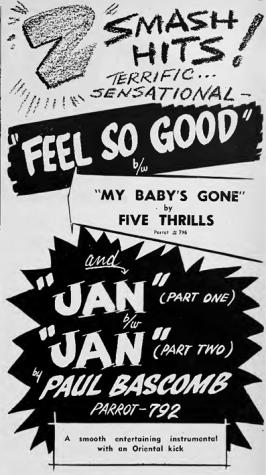
Songs :

Personnel :
Gilbert Warren (Lead Tenor)
Oscar Robinson (Baritone)
Fred Washington (Baritone)
Obie Washington (Second Tenor)
Levi Jenkins (Bass / Piano)
Discography :
Biography :


Songs :
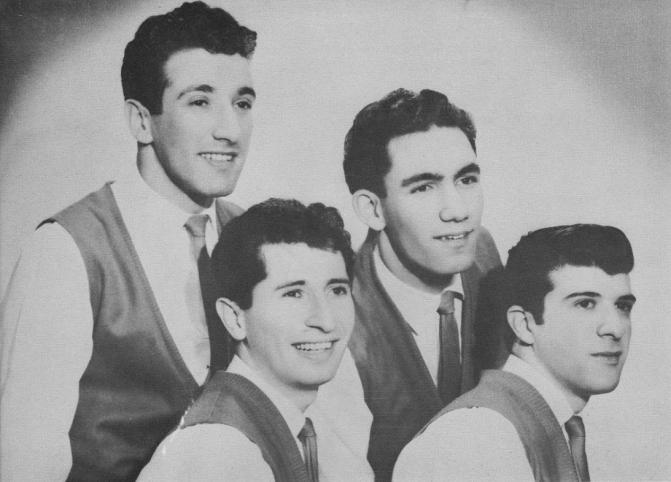
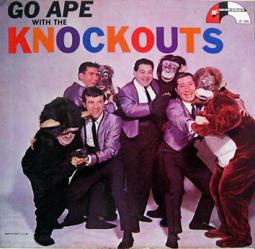

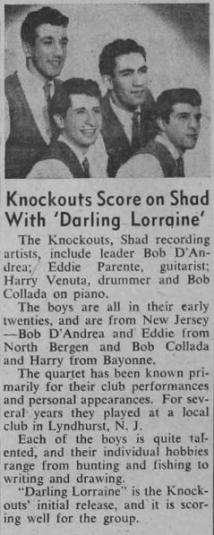

During the 60's, The Knockouts used to perform in Seaside, NJ at the Parrot Club, Luciano's in Lodi, NJ, in Lyndhurst, NJ and also up at Greenwood Lake, NY on weekends. Bob Catucci (aka Pierre LaSalle) replaced Harry Venuta in 1960.
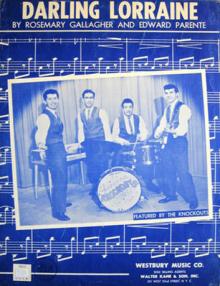
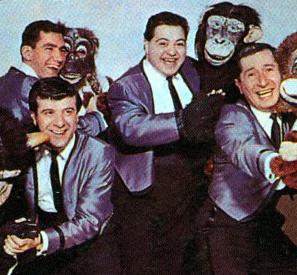

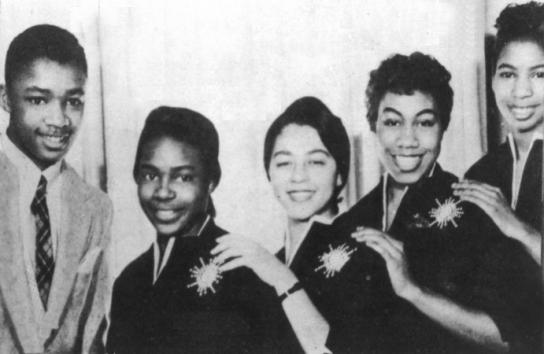
The song became a big hit on the R&B charts and is credited as being one of the first true girl group tunes. The group had some local success in New York with some follow-ups , but nothing came close to the chart power of "Lonely Nights."After a series of mild items on baton, the Hearts were moved to Zell’s own J&S Records, but the girls in the original group were dumped when Sanders felt they weren’t being serious enough about being recording stars.

By 1957, the new group, which featured a young Baby Washington, in addition to Anna Barnhill, Theresa Chatman and Joyce Peterson, began recording. The first release "Dancing In A Dream World," kept the Hearts’ schedule busy, but the chart was still barren. Over the next few years a dozen girls or more would filter in and out of the Hearts as Sanders picked who would be on what recording, hired and fired personnel at will, and created new group names to release her product. One such name was the Jaynetts, a combination of the J in J&S records, and Heart singer Lezli Valentine’s middle name, Anetta. In 1958 Sanders’ released "I Wanted To Be Free b/w Where Are You Tonight," to an indifferent audience.
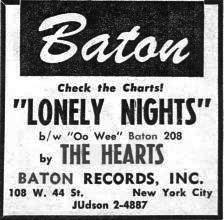

Meanwhile, various configurations of the Hearts kept releasing singles through 1961 without much more than regional interest. Sanders encountered some financial problems in the early 1960s and despite the creation of new labels like Tuff and Zell’s, couldn’t keep her business afloat. Executives at Chess Records still thought Sanders had something going for her, though, and helped to bankroll her next venture, a revamped version of the Jaynetts.


In 1963, Sanders, producer Abner Spector and his wife Lona Stevens, came together to create one of the most talked-about records of the 1960s. "Sally Go ‘Round The Roses," by The Jaynetts, a nursery rhyme turned pop hit was recorded during several sessions over for more than a week.
Estimates now put the cost of this recording at well over $60,000, a huge cost for something that only lasted about 3 minutes and for a producer who hadn’t had a bonafide hit since 1955.

The Tempos (1) (Pittsburg, Pa)
Personnel :
Jim Drake
Mike Lazo
Gene Schacter
Tom Minito
Discography :


Mike Lazo, Gene Schacter, and Bobby Vinton : The Hilites
Brill Building song writers Sid Wayne and Sherman Edwards wrote the song “See You in September” on a Friday of June 1959. They pitched the song to Jack Gold that afternoon. He brought the rights to it for $500 and called the Tempos that evening to fly New York. The Tempos recorded the song the next day in New York, the record was on Monday, the testing pressing was done on Thursday, and its was getting airplay on WNEW on Friday. It was released on the short lived Climax Records label. The record broke in San Francisco, hit the national charts in July, and climbed to #23 on the Billboard Hot 100 at the end of August.

The Tempos performed on American Bandstand on October 12, 1959. “See you in September” was their one national success. Climax released a follow-up single "The Crossroads of Love" / "What" later in 1959 that did not reach the charts. They continued to perform at Pittsburgh area dances, appear on local television dance programs, and record until 1965. They release the singles "Look Homeward Angel" / "Under 10 Flags" (Paris 1959), "My Barbara Ann" / "When You Loved Me" (Ascot 1965), and "My Barbara Ann (re-release) / "I Wish It Were Summer" (Ascot 1965).
(Top L-R) James "Sonny" Griffin, Billy Emery, (Bottom L-R) Leroy Griffin, James "Coco" Tyson
Personnel :
Billy Emery (Lead)
Leroy Griffin (Bass)
"Sonny" Griffin (Second Tenor)
Jimmy "Coco" Tyson (Baritone)
Walter Singleterry (First Tenor)
Discography :
1953 - Ship of love / Play Boy (J&G 101)
Hailing from New Haven, CT, the original Nutmegs -- lead Leroy Griffin, Sonny Griffin (born James, he was Leroy's brother), Dieder Cobb, and a second Leroy Griffin (yes, there were two men with the same exact name) who later became Leroy Gomez -- all sang together with other members -- Walter Singleterry, Bill Emery, and Gomez's brother Tommy Griffin -- moving in and out of the lineup. The group performed on the street corners of New Haven, especially Webster and Dixon Streets, where Jimmy "Co Co" Tyson was asked to join the key lineup and soon they were a quintet..
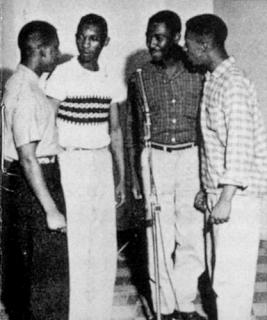
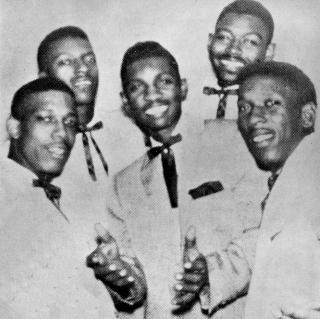
The Nutmegs fragmented again and some of the members left to form a group of their own, the Lyres; the Gomez brothers formed the Four Haven Knights. Now comprised of a lineup that included Bill Emery (lead), Walter Singleterry (first tenor), Sonny Griffin (second tenor), Jimmy Tyson (baritone), and Leroy Griffin (bass), the group met promoter Charlie Johnson in 1953, who fell for their sound and decided to record two of Leroy's songs, "Ship of Love" and "Playboy," for his small J&G label after the group was passed over by the local Klik label .
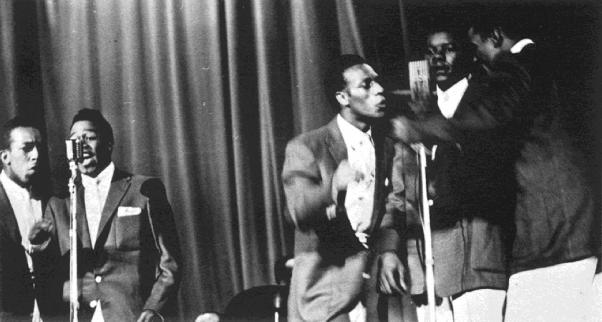

The Lassies (Lombard,IL.)
Personnel :
Joan (Yud) Goldner
Carol Brown
This pop vocal group were formed in Chicago by Joan Goldner. A Chicago native, Goldner began singing in church at age 7, studied voice with a member of the Chicago Lyric Opera. That was back in the era of the girl trios. Someone in Chicago was looking for a girls trio to manage, and the girls ended up with a record contract with Decca Records.

The Lassies on Decca with Jack Pleis and A&R man Paul Cohen.

Personnel :
Roy Hammond (Lead, First Tenor)
Claude Johnson (Lead, First Tenor)
Bill Gains (Second Tenor)
Alexander "Buddy" Faison (Baritone)
Fred Jones (Bass)
Discography :
Singles :
This short-term group from Long Beach, Long Island recording career lasted three years, and five singles; they broke up a year after they started recording in 1958, but Warwick Records issued canned material til 1961. The original members: Roy Hammond, Bill Gains, Alexander Faison, and Fred Jones formed in 1956. They didn't record until Brooklynite Claude Johnson came aboard.
Johnson, the only member not from the Long Beach area, named them the Genies; he had sung with a Brooklyn group that included Eugene Pitt, who never sang with the Genies. Bob Shad, the owner of Shad Records saw them singing on a beach and invited them to audition for his label. The result was "Who's That Knockin'," recorded, June 1958; but Shad didn't release it until March 1959, nearly a year later.

It did well R&B but wallowed on the lower rungs of the pop chart at #71. Then without warning, second tenor Bill Gains ran off to Canada with a woman and has never been seen or heard from since. This occurred while the Genies were playing their first big engagement at New York's Apollo Theater; three days into the gig, and poof - Gains vanished.

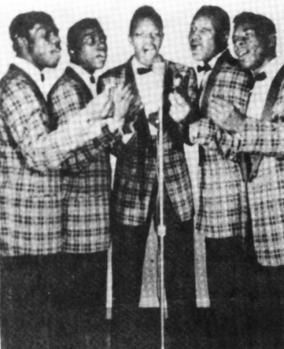
The Genies answered their debut with "No More Knockin'" on Hollywood Records, then the Warwick label released three singles after the group became history. By the end of 1959 the Genies was a memory. Hammond cut a string of solo records as Roy C, his biggest was "Shotgun Wedding," a #14 R&B hit.

